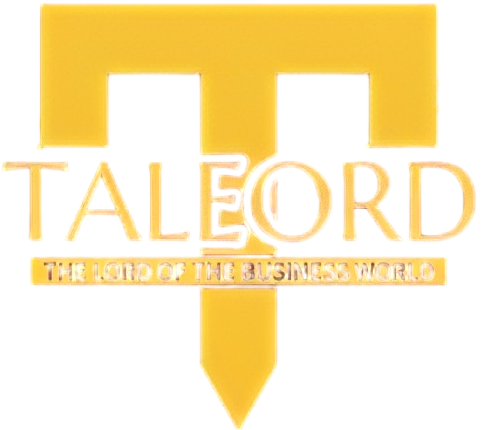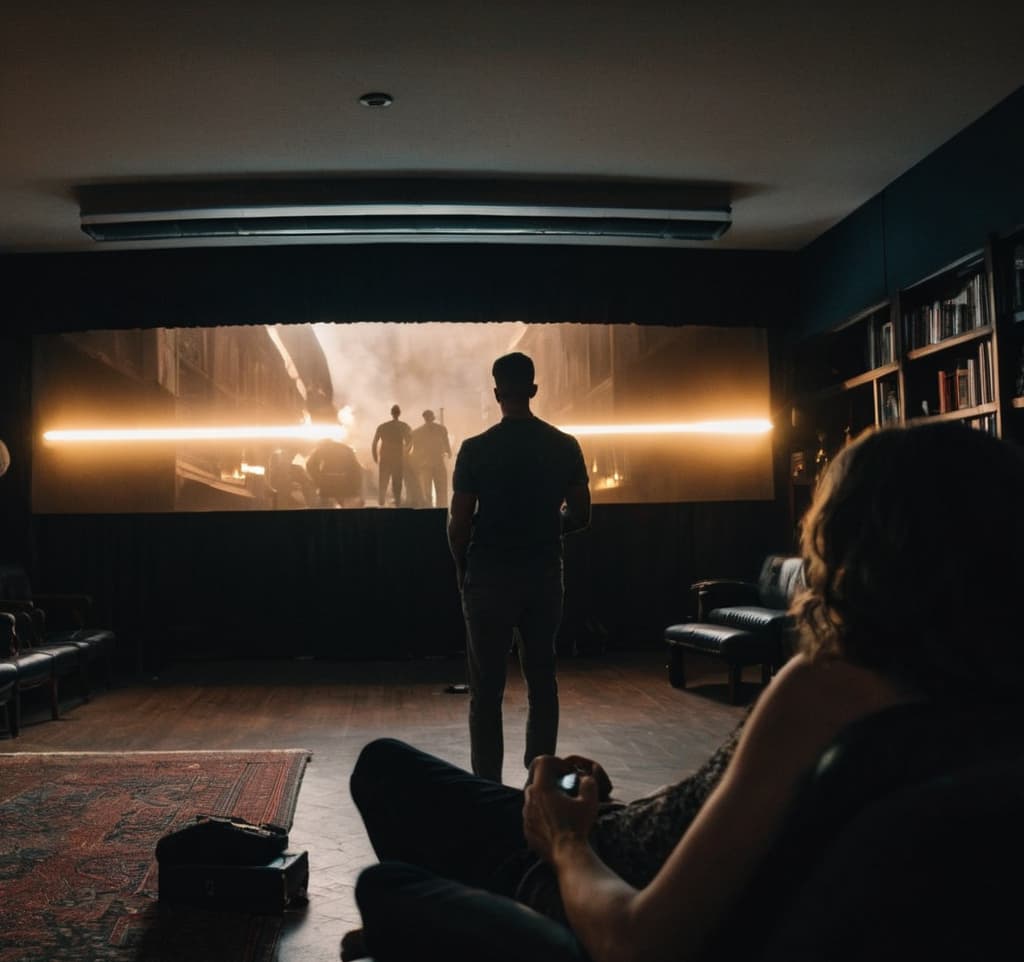As someone deeply passionate about the art of storytelling, I’ve always found the nuanced world of literary classification fascinating. When exploring the cosmos of narratives, you may wonder, “What is a subgenre?” Simply put, the beauty of this term lies in its ability to carve out a distinct literary niche, enriching our reading experiences. Among the myriad of fantasy subgenres, one that piques my interest is the definition of the cozy fantasy subgenre, a realm where warmth meets whimsy, and conflict is often resolved with a comforting resolution.
The importance of subgenres is more than an academic exercise; it’s a gateway for readers to align their interests with the themes and settings they adore. Whether you’re delving into the wonders of high fantasy or the familiar embrace of contemporary settings, to define subgenre is to navigate the map of literature with a more discerning eye. The tapestry of storytelling is diverse, and each thread—each subgenre—offers a unique exploration of humanity and imagination.
Key Takeaways
- Understanding the concept of subgenres helps locate specific literary interests and preferences.
- The cozy fantasy subgenre stands out with its soothing, community-centric narratives.
- Subgenres enrich the literary landscape, providing tailored experiences to diverse readerships.
- Genres house numerous subgenres, offering broad canvases for storytelling variations.
- Subgenres can redefine our perceptions and invite us to rethink conventional genre boundaries.
- Defining subgenre characteristics empowers readers to curate their personal libraries with precision.
- Exploring the question, “What is a subgenre?” opens doors to new worlds and thematic depths.
Subgenre Definition: Carving Out Unique Spaces within Genres

As a devoted explorer of the vast literary landscape, I’ve come to appreciate the nuanced territories we call subgenres. I’ve seen firsthand how these unique subsections within genres offer a more specialized and focused lens through which readers can understand and savor their favorite types of stories, films, and music.
Understanding Subgenre Meaning
A subgenre is best thought of as a niche within a broader category. To put it simply, a subgenre definition can be articulated as a distinctive grouping that emerges from a larger genre, marked by unique characteristics and thematic preoccupations that set it apart. Delving into these specialized categories is like entering a room designed with a distinct personality in a grand house of genres.
The Importance of Subgenre Classification
In my journey through different artistic expressions, I’ve observed countless subgenre examples that demonstrate just how crucial this classification is. Types of subgenres serve not just as labels, but as beacons guiding enthusiasts to the experiences they seek. Whether it’s in the written word or the visual spectacle of film, subgenre meaning provides depth and context, enriching how works are produced, marketed, and enjoyed.
| Genre | Subgenre | Subgenre Characteristics |
|---|---|---|
| Fantasy | Urban Fantasy | Modern city settings intertwined with magical elements |
| Romance | Historical Romance | Love stories set against the backdrop of significant historical events |
| Horror | Psychological Horror | Emphasis on mental, emotional, and psychological states to unsettle |
| Science Fiction | Cyberpunk | High-tech and low-life themes reflect contemporary anxieties |
| Music – Hip Hop | Trap | Heavy use of 808 sub-bass kick drums and layered synthesizers |
Uncovering the tales that resonate with us, seeking adventures that thrill, or finding solace in music that speaks to our soul, all become more accessible and refined when we understand subgenre characteristics. Whether creators or consumers, our appreciation of art is heightened by the worlds within worlds that subgenres represent.
Exploring Different Subgenres Across Various Art Forms
As we delve deeper into the intricate world of subgenres, we find that each art form presents distinctive flavors that cater to an array of personal tastes. Whether it’s the written word that captivates our imagination, the rhythms that move our spirit, or the cinematic experiences that hold our gaze, subgenres play a pivotal role in shaping our cultural landscape.
Subgenre in Literature
In literature, subgenres create landscapes for readers to explore various realms. For instance, urban fantasy grounds magical elements in a modern cityscape, while historical fantasy weaves its magic into the rich fabric of past eras. The cozy ambiance of a cozy fantasy subgenre stands out with its emphasis on warmth, community, and often, a solace from the high stakes of epic quests. These literary nooks resonate with readers who seek both familiarity and fantasy themes in their reading nooks.
Subgenre in Music
Music, with its boundless capacity to express and evoke emotion, is another realm where subgenres thrive. The pulsating beats and raw storytelling of various hip-hop subgenres, the synthesizer melodies in diverse forms of electronic music, and the twanging guitars of country music’s offshoots all cater to specific tastes. These subgenres in music not only define genres but also reflect cultural shifts and auditory preferences that resonate with listeners worldwide.
Subgenre in Film
The silver screen is no stranger to subgenres either. Film buffs revel in the stylized and moody ambiance of noir films, while the rugged landscapes and antiheroes of spaghetti westerns have created a legendary chapter in film history. Meanwhile, psychological thrillers lead audiences through intricate plots featuring suspense, mystery, and an exploration of the human mind. Each of these subgenres in film offers a distinct cinematic experience that transports viewers into divergent storytelling realms of horror, romance, and science fiction.
Understanding these subgenres provides a broader appreciation for the creativity and depth in various art forms. It also illuminates how themes of fantasy, the thrill of horror, the puzzle of a mystery, the warmth of romance, and the innovation of science fiction can be spun in countless ways, each offering a unique experience that speaks to the heart of its audience.
Dissecting Subgenre Characteristics and Their Significance

When I immerse myself into the world of subgenres, I uncover a tapestry of thematic elements and motifs that define each category. It’s fascinating to see how the subgenre characteristics like the comforting found family trope in cozy fantasy contrast with the unrelenting futurism in cyberpunk. Understanding these traits isn’t just an academic exercise; it enriches my appreciation of the narratives and offers insights into the creator’s intent. Let’s embark together on an exploration of what sets subgenres apart and why they matter to us as readers and viewers.
Take the subgenre classification for instance; it’s essential for navigating the literary or cinematic cosmos. When I pick up a book or choose a movie, knowing its subgenre primes my expectations and guides my mood. It’s the subtle difference between preparing for the slow burn of a psychological thriller versus the adrenaline pump of an action adventure.
Subgenre characteristics not only shape my current experience but also the evolution of subgenres. They mirror the transformations within society, responding to our collective consciousness, embodying our hopes, our fears, and our cultural narrative. The subgenre landscape of today might seem like an alien terrain to a time traveler from the past, as themes evolve to align with modern sensibilities and technological advancements.
Considering the popular subgenres, one might ask, how do they ascend the ladder of popularity? What themes resonate with the masses, and why do others occupy niche corners? I’ve compiled a summary of distinctive attributes from various subgenres to illustrate my observation of this phenomenon:
| Subgenre | Defining Characteristics | Appeal |
|---|---|---|
| Cozy Mystery | Whodunit puzzles, minimal violence, often involving amateur detectives | Comfort in logic and order |
| Steampunk | Alternative history, steam-powered machinery, Victorian aesthetic | Nostalgia blended with technological wonder |
| Dystopian YA | Oppressive societies, young protagonists challenging the status quo | Rebellion against authority, coming-of-age empowerment |
| Space Opera | Epic scale, space warfare, melodramatic adventure | Escapism into the vastness of space and adventure |
The thematic trends that define these subgenres offer a refuge, a moment of awe, or a catalyst for introspection. They are signposts of our time, guiding us through literature and film with flags that signal, “Here be dragons,” or “Here find comfort.”
As I continue to explore and understand subgenres, I realize that they are more than just labels on a spine or a film category. They are the resonant frequencies of our culture’s heartbeat, the distinctive beats that make every story dance to its unique rhythm.
Subgenre vs Genre: Identifying the Differences

As a passionate literature enthusiast, I’ve always been fascinated by the rich tapestry that genres and subgenres weave within the storytelling realm. To understand the divergence between genre and subgenre is to unlock a deeper appreciation for the literary world. Let’s peel back the layers and unearth the distinctions that separate these classifications and the unique space they each occupy within the literary universe.
Distinct Features of Subgenres
Subgenres carry distinct features that set them apart from broader genres. Imagine entering a lush forest—the genre—and then stumbling upon a beautiful hidden glen—the subgenre. It’s a specialized niche that resonates with unique thematic elements or stylistic hallmarks. For instance, cozy fantasy, a lesser-known alcove, offers magical escapes with gentle narratives, contrasting sharply with the more expansive and gritty realms found within the overarching fantasy genre.
The Nuances of Genre and Subgenre Relationships
New readers might wonder what exactly constitutes the differentiation between a genre and a subgenre. By definition, a genre is a broad category that encompasses an array of stories sharing common traits, such as fantasy, romance, or horror. Subgenres, however, are subsets that refine these categories into more specific sectors, each with its own conventions and audience expectations. Literary examples of subgenres, like cyberpunk within science fiction, highlight how subgenres can evolve from their parent genres, often influenced by societal trends and technological advancements. The symbiotic interplay between genre and subgenre demonstrates a dynamic relationship where both influence and enrich each other, ultimately explained and celebrated as integral parts of literary art.
Popular Subgenres and Their Impact on Culture
As I’ve observed the evolving landscape of the entertainment world, I’ve noticed how subgenres not only develop over time, but also how they reflect and influence our culture. Some subgenres have a lasting impact, changing the way we think about storytelling and the themes that resonate with us. Let’s delve into the current scene, shall we?
Evolution of Subgenres
The lifelines of subgenres can be traced back through decades, as they evolve and adapt to the shifting tastes of audiences. For instance, the young adult dystopian fiction that emerged in the early 2000s not only captivated readers but also mirrored societal concerns. It’s fascinating to witness how the nuances of our worldviews and collective anxieties are reflected in these works. Over time, these subgenres can morph, becoming almost new entities entirely, which keeps the literary and cinematic worlds fresh and intriguing.
Subgenre Trends Shaping the Entertainment World
Subgenre trends have the power to propel entire mediums forward, influencing both content creation and consumption. The return of space operas in recent years not only serves our appetite for grand, interstellar adventures but also aligns with advancements in visual effects technology, enabling the rich, detailed universes we see on screen. This resurgence in space operas is more than just spectacular entertainment; it’s reshaping expectations and inspiring a new generation of creators.
| Subgenre | Origin | Cultural Impact |
|---|---|---|
| Young Adult Dystopian | Early 2000s | Reflecting societal anxieties, inspiring dialogues on governance and individuality. |
| Space Operas | Golden Age of Sci-Fi (1940s-1960s) | Revitalizing interest in space exploration, shaping modern VFX in film and TV. |
| Psychological Thrillers | Mid-20th Century | Invigorating explorations of the human psyche, pushing boundaries of suspense and emotion. |
Emerging Subgenres: Catching the Wave of New Trends

In my journey through the literary and musical landscapes, I’ve been enthralled by the emerging subgenres that are captivating audiences and redefining the boundaries of creative expression. With fresh elements blending into traditional formats, these new waves are making a remarkable impact on literary movements and the ways we consume media.
Take, for example, LitRPG, a subgenre that has recently caught the attention of the literary world. It combines the mechanics of role-playing games with traditional storytelling, creating an immersive and interactive experience for readers. Similarly, in the music scene, hyperpop is pushing the limits of genre by merging high-tempo beats with eclectic sound design, resulting in a subgenre that’s both edgy and accessible.
The rise of these emerging subgenres isn’t just a fad; it’s being driven by significant socio-cultural and technological factors. The digital revolution has made it easier for communities to form around niche interests, while societal shifts are pushing for narratives and music that challenge the status quo and more accurately reflect the variegated fabric of modern life.
| Emerging Subgenre | Literary/Musical Elements | Cultural Influence |
|---|---|---|
| LitRPG | Interactive game mechanics, quest-driven plots | Influencing video game narratives and interactive ebooks |
| Hyperpop | Glitchy vocals, high-tempo beats, avant-garde sound | Defining new fashion and aesthetic movements in youth culture |
Moreover, these subgenre trends are beginning to seep into mainstream media, indicating a shift in the perception of what’s considered conventional. As someone passionate about fantasy subgenres, I’m especially intrigued by how they challenge and expand the definition of fantasy itself, offering fresh perspectives within an established domain.
Emerging subgenres are not just reshaping our current media—they are paving the way for future literary movements and artistic expressions.
I’m excited to witness the future of these subgenres, watch them evolve, and see how they will inspire new generations of artists and storytellers.
“What Is a Subgenre”: Demystifying the Term
As a devoted reader and writer, I’ve always been fascinated by the rich tapestry of literary categorizations and how they speak to our individual tastes. In my journey, a common query arises: what is a subgenre? This question isn’t just about cataloging books or films; it’s about connecting you to the very stories that will resonate with your soul. Let’s take a closer look at the underlying informational intent and sift through subgenre examples to enhance our understanding.
The Informational Intent Behind the Question
When I’m asked about subgenres, I reflect on the informational intent that fuels this inquiry. People are on a quest to find a mirror to their imagination within the labyrinth of genres. Whether your definition intent is driven by a penchant for dark, brooding tales or uplifting sagas of love, identifying subgenres is like being handed a map to navigate the vast world of storytelling. It’s a search for that perfect niche where content aligns with personal inclinations and speaks directly to one’s interests.
Subgenre Examples to Illuminate the Concept
Delving into subgenre examples helps put a spotlight on this classification’s importance. At first glance, thrillers might seem straightforward, but when you consider the finer shades like psychological thrillers, the experience differs remarkably. To illustrate this differentiation with unparalleled clarity, let’s look at a table comparing subgenres that cater to various examples intents:
| Genre | Subgenre | Defining Traits | Intent Catered To |
|---|---|---|---|
| Fantasy | High Fantasy | Elaborate alternate world settings, epic quests | Escapism, Intrigue in complex world-building |
| Mystery | Cozy Mystery | Amateur sleuths, less violence | Comfort, Puzzle solving without the gore |
| Thriller | Psychological Thriller | Character-driven, explores mental states | Deep psychological dives, suspense |
| Science Fiction | Cyberpunk | Near-future, high-tech contrasted with social disorder | Technological curiosity, exploration of ethics |
In crafting this table, I’ve picked examples intent on showcasing how subgenres satisfy unique tastes and curiosities. Each entry in this compendium serves as a beacon for readers and audiences, guiding them towards experiences that align precisely with their emotional or intellectual pursuits. As we turn the pages or press play, these subgenres are not mere labels—they are portals to the very essence of our diverse storytelling cravings.
Fantasy Subgenres: A World of Endless Possibilities

As a passionate reader and a lifelong devotee of the fantastic, I am continually amazed by the rich variety within the fantasy genre—one that spans numerous subgenres, each offering a distinct flavor and experience. Two standout subgenres are urban fantasy and historical fantasy, and intriguingly, both reimagine our world with a magical twist. Yet, they diverge in setting and tone, with urban fantasy immersing readers in a familiar contemporary world laced with the supernatural, while historical fantasy invites us into a meticulously crafted setting of the past, enlivened with fantastical elements.
Urban Fantasy vs Historical Fantasy
Let’s dive into the bustling streets and shadowed alleyways of urban fantasy, a subgenre defined by its modern setting with an undercurrent of magic, mythical beings, and secret societies. Literary examples such as Neil Gaiman’s Neverwhere and Cassandra Clare’s The Mortal Instruments series exemplify urban fantasy’s enchanting blend of the recognizable and the uncanny.
In contrast, historical fantasy takes us on a journey through time, infusing elements of mythology and folklore into periods of human history. Naomi Novik’s Temeraire series casts dragons into the epic battles of the Napoleonic Wars, while Susanna Clarke’s Jonathan Strange & Mr Norrell draws us into an alternate 19th-century England where magic is part of the social and political fabric.
Defining Cozy Fantasy: A Newcomer in the Fantasy Realm
Among the blossoming branches of fantasy is the cozy fantasy subgenre, which has recently found a fervent readership. Cozy fantasy is characterized by its healing ambiance, intimate scale, and narratives that emphasize personal growth, community, and the magic in the ordinary. These tales provide solace and warmth, often focusing on the interpersonal and mundane conflicts rather than epic battles and world-ending stakes.
Literary examples of cozy fantasy-like Alexandra Rowland’s A Conspiracy of Truths and T. Kingfisher’s Swordheart showcase a move towards storytelling that wraps readers in a comforting blanket of gentle adventure and whimsy. Through these works, we see a shift in the traditional fantasy narrative—where the heartwarming journey matters as much as the destination, and the greatest magic often lies in human connections.
| Fantasy Subgenre | Setting | Magic | Common Themes | Typical Conflicts | Example Works |
|---|---|---|---|---|---|
| Urban Fantasy | Modern cities | Hidden within the real world | Secret societies, myth in modernity | Mystical beings vs humanity | Neverwhere, The Mortal Instruments |
| Historical Fantasy | Past eras with a twist | Interwoven with history | Mythology, alternative history | Impact of magic on historical events | Temeraire, Jonathan Strange & Mr Norrell |
| Cozy Fantasy | Intimate settings | Gentle, intrinsic to the environment | Community, personal growth | Interpersonal relationships, self-discovery | A Conspiracy of Truths, Swordheart |
Literary Examples of Subgenres That Defy Expectations

In my ever-evolving journey through the world of literature, I’ve encountered subgenre examples that twist and transcend conventional boundaries. These unique narratives embrace fantasy themes and an inventive subgenre definition. For instance, ‘The Time Traveler’s Wife’ by Audrey Niffenegger merges elements of science fiction with romance and introspective drama, while China Miéville’s ‘Perdido Street Station’ distills fantasy, steampunk, and New Weird elements into an engrossing tale.
These literary examples of subgenres do more than entertain; they enrich our literary palate by meshing unexpected thematic threads and challenging the rigidity of genre classifications. It’s these works that redefine our expectations and draw in niche audiences craving something beyond the norm. They are prime demonstrations of how a subgenre can evolve the landscape of storytelling.
- Speculative fiction that blends political intrigue with mythology, such as ‘American Gods’ by Neil Gaiman, invites us into a space where the literary realms of fantasy and modernity coalesce.
- ‘The Martian’ by Andy Weir, a survival story set against the backdrop of Mars exploration, carves a niche of its own at the intersection of hard science fiction and humor.
- ‘Piranesi’ by Susanna Clarke, as another fine example, escorts readers through a labyrinthine narrative that wraps mystery, magical realism, and existential meditations into one.
Each one of these works reshapes the landscape, prompting us to rethink how we classify and engage with genre and subgenre. They have an undeniable impact on not just my reading experiences, but also on the broader context, where the appetite for innovative storytelling continues to grow.
Subgenre Characteristics: Crafting Niche Narratives
In my exploration of the literary world, I’ve discovered that subgenre characteristics profoundly influence the heartbeat of a narrative. Specifically, cozy fantasy books embrace community and togetherness, weaving stories where camaraderie prevails over conflict. It’s this very valuing of interpersonal bonds that shapes not only the narratives but also the thematic trends within the subgenre—a comforting counterpoint to the often tumultuous plots found elsewhere in fiction.
Community and Togetherness in Cozy Fantasy Books
Cozy fantasy books, a term that may seem enigmatic to the uninitiated, incorporates settings and storylines that radiate warmth and foster a sense of community. The stakes here are personal, the dangers less lethal, and the focus shifted towards solving mysteries or overcoming challenges through cooperation and understanding. As an avid reader, I’ve come to appreciate how these stories celebrate the gentle strength found in unity, creating a refreshing departure from the cataclysmic perils often encountered in other subgenres.
Higher and Lower Stakes in Fiction: The Subgenre Influence
On the spectrum of literary excitement, the stakes in fiction can either soar to cosmic heights or burrow into the complexities of individual dilemmas. While epic fantasies might pit heroes against world-ending threats, cozy fantasies scale back, emphasizing more relatable challenges—a loved one’s distress, a community’s harmony disrupted, subjects my readers can intimately relate to. I’ve observed the pull of these various stakes on reader’s emotions and purchasing choices, noting how they seek out narratives that resonate with their personal experiences, shaping both thematic trends and reading habits.
We also have a great article on What Is A Character Actor that you might like to check out

FAQ
What is a subgenre?
Happy to explain! A subgenre is a specific category within a larger genre that comes with its own unique characteristics, themes, and patterns. It refines the broader category and offers a more specialized lens through which to enjoy literature, film, music, and other forms of art. Just like visiting a favorite coffee shop where they know your order by heart, subgenres help audiences find works that cater to their specific tastes within the wide world of creativity.
How does subgenre classification enhance my entertainment experience?
Subgenre classification is like having a map in an enormous library. It helps you navigate toward the content you love—be it horror, romance, urban fantasy, or any other niche. This not only aids in discovery but also ensures that content creators can reach their intended audience more effectively. Whether you’re in the mood for a cozy mystery novel or an atmospheric black metal album, subgenre classification gets you to your desired destination with ease.
Can you give some examples of subgenres in literature, music, and film?
Absolutely! Literature bursts with subgenres like urban fantasy, where the mystic and the mundane collide in cityscapes; historical fantasy that weaves magic into bygone eras; and cozy fantasy, where you can escape into worlds brimming with charm and warmth. In music, we might groove to hip-hop’s various subgenres like trap or jazz rap, or chill with electronic music subgenres ranging from ambient to techno. And in film, subgenres like spaghetti westerns deliver dusty, high-tension showdowns, whereas psychological thrillers offer mind-bending narratives that keep us glued to our seats.
What are some defining traits of popular subgenres?
Each subgenre has its own signature flair. Take the cozy fantasy books, for instance, which often champion the found family trope and a nurturing atmosphere, or the sleek and high-tech vibe of cyberpunk in science fiction. Understanding these traits helps us to select media that resonates with our current mood or preferences, deepening our connection to the stories we love.
How do genre and subgenre differ from each other?
Think of genres as the big umbrella categories that cover broad themes and styles like fantasy, romance, or horror. A subgenre, on the other hand, takes you under one of the umbrella’s panels—it’s a more concentrated flavor within that broad category. For instance, the fantasy genre encompasses everything from dragons to wizards, but cozy fantasy zeroes in on comforting narratives with a dash of magic. Recognizing these layers lets us appreciate the nuances in storytelling.
What are some popular subgenres, and why do they matter culturally?
Subgenres like young adult dystopias or space operas have not only provided immense entertainment but have also shaped cultural conversations and trends. They reflect societal concerns, push the boundaries of imagination, and often have a lasting impact on fans and content creators alike, influencing what we see on bookshelves and screens and how we perceive the world around us.
Which emerging subgenres should I keep an eye on?
The literary and music scenes are always evolving, and right now, genres like LitRPG in books and hyperpop in music are drawing in new audiences. They’re fascinating not just for their unique take on storytelling and sound but also for what they say about current technological and social climates. Staying tuned to these shifts can keep you ahead of the curve in discussions about cutting-edge creative works.
Why is it important to understand subgenres?
Understanding subgenres allows you to fine-tune your search for content that fits your exact needs and preferences. Whether you’re seeking a specific thematic experience or a certain type of storytelling, grasping the concept of subgenres equips you with the knowledge to seek and appreciate niche works that align with what you’re searching for—and sometimes discover a new favorite!
How do urban fantasy and historical fantasy differ?
Urban fantasy transports magic and myth into the heart of modern cities, blending the contemporary world with fantasy elements. On the flip side, historical fantasy infuses folklore and the supernatural into specific historical periods, providing an alternate, magical version of history. Both subgenres offer a unique twist on the fantastical, taking readers on diverse and thrilling literary journeys.
What is cozy fantasy and what makes it particularly captivating?
Cozy fantasy is a delightful subgenre brimming with magic, kind-hearted characters, and settings that exude a sense of comfort and well-being. It’s characterized by healing ambience, a community focus, and gentle storytelling often devoid of epic battles or dark themes. The genre has steadily gained traction for providing readers an escape to worlds filled with hope and a breath of fresh air from the fast pace of modern life.
In what ways do the characteristics of subgenres like cozy fantasy shape narratives?
Cozy fantasy’s emphasis on community and togetherness can lead to narratives that center around personal growth, relationships, and small-town dynamics rather than planet-wide peril. This shift in thematic focus means the stakes can be more personal, relatable, and centered on character development. It’s perfect for audiences who relish storytelling grounded in personal connections and a reprieve from larger-than-life struggles.
We also have interesting and useful content like this article on our website that you will definitely be interested in viewing

Final word :
In delving deeper into the intricate world of subgenres, one finds a tapestry of thematic elements and narrative motifs that define each category. These characteristics profoundly influence the heartbeat of storytelling. Cozy fantasy, for instance, embodies warmth, community, and comfort, offering narratives that prioritize interpersonal connections over epic conflicts. Understanding subgenre characteristics isn’t just an academic exercise; it enriches our appreciation of narratives and offers insights into the creator’s intent. The symbiotic relationship between genre and subgenre showcases a dynamic interplay where both shape and enrich each other, forming integral parts of literary art.

